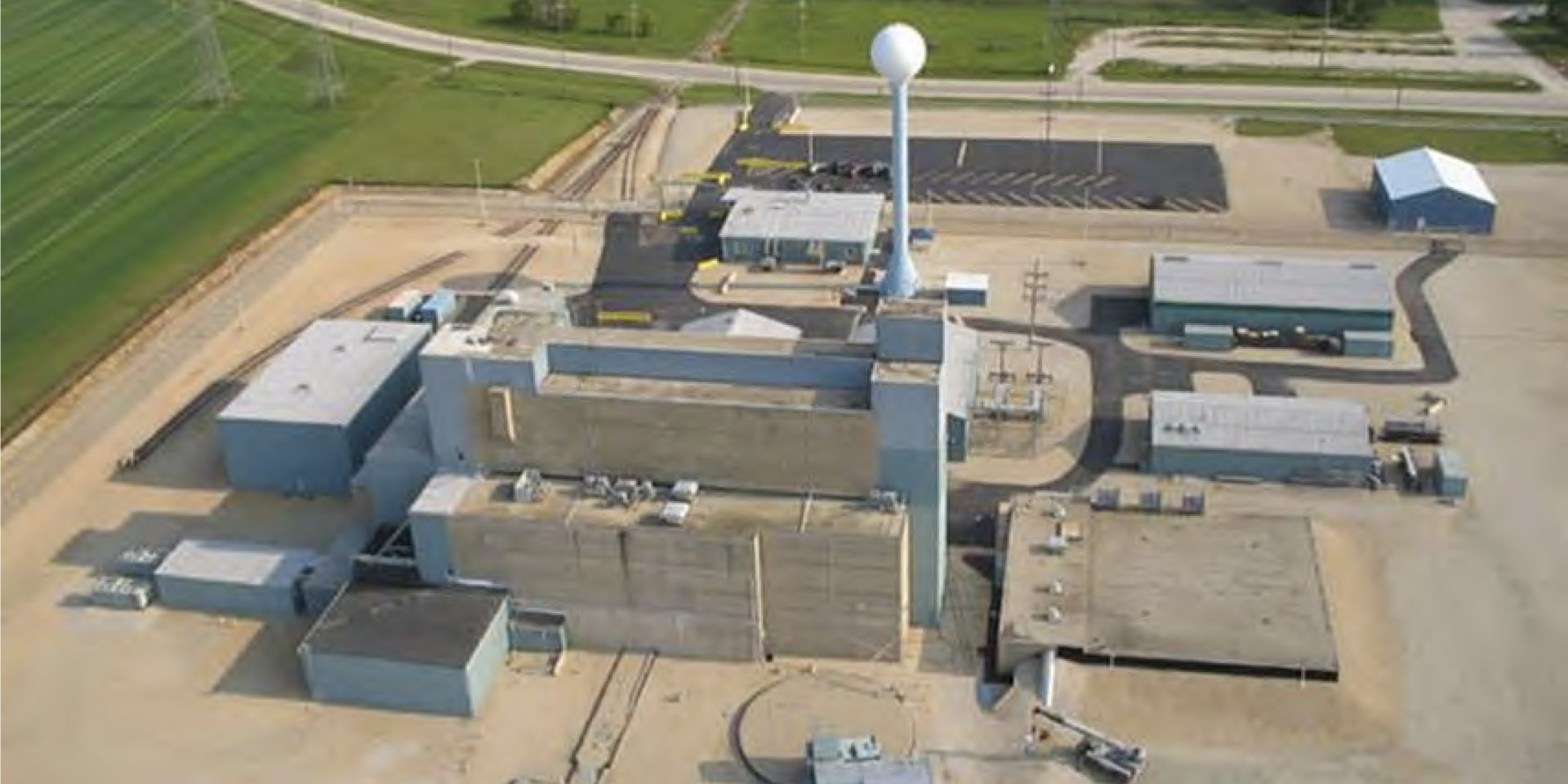Spain’s nuclear power plants are to use Holtec’s HI-STORM spent fuel storage technology. (Image: Holtec)
Holtec International announced that its flagship HI-STORM Multi-Purpose Canister (MPC) spent fuel storage technology was selected by Spain’s national company Enresa for a fleet of six nuclear power reactors at four plant sites in the country. Equipos Nucleares S.A. (ENSA), a Cantabria-based manufacturer of equipment for the Spanish nuclear fleet, was named a consortium partner with Holtec in the order, which was conducted under European Union procurement rules.
An illustration of Switzerland’s proposed deep geological repository. (Image: Nagra)
Nagra, Switzerland’s national cooperative for the disposal of radioactive waste, has announced that it has selected Nördlich Lägern as the site for a deep geological repository for radioactive waste. According to Nagra, extensive investigations have shown that Nördlich Lägern, located in northern Switzerland near the German border, is the most suitable area for a geologic repository with the best overall safety reserves.
Ontario’s South Bruce area is being considered as a potential host site for a spent fuel repository. (Photo: NWMO)
Canada’s Nuclear Waste Management Organization (NWMO) is shifting the timing for selecting a preferred site for a spent nuclear fuel repository to the fall of 2024, a full year later than previously planned. The NWMO, a nonprofit organization tasked with the safe, long-term management of Canada’s spent fuel in a deep geological repository, said the delay is the result of several provincial lockdowns associated with the COVID-19 pandemic.
Myrna Simpson conducts molecular biogeochemistry research at the University of Toronto Scarborough. (Photo: Ken Jones/University of Toronto)
Researchers at three Canadian universities are studying whether bentonite clay—used as an engineered barrier in Canada’s proposed deep geological repository—can support sulfide-producing microbes that can eat away at the canisters containing spent nuclear fuel.
A modified forklift with a customized handling attachment is used to move spent fuel containers and their heavy bentonite clay housings. It can move autonomously or be manually operated remotely from outside the room, as needed. (Photo: NWMO)
Canada’s Nuclear Waste Management Organization (NWMO) has announced that it has successfully completed a full-scale demonstration of the engineered barriers that are designed to contain and isolate Canada’s spent nuclear fuel in a deep geological repository.
Spent nuclear fuel handlers move the last ATR fuel to an awaiting cask in the CPP-666 basin. (Photo: DOE)
The last spent nuclear fuel elements from Idaho National Laboratory’s Advanced Test Reactor (ATR) have been retrieved from a water-filled storage basin and transferred to a nearby dry-storage facility in accordance with a 1995 agreement with the State of Idaho, the Department of Energy’s Office of Environmental Management (EM) announced this week.
Rendering of the Forsmark geologic repository for spent nuclear fuel in Sweden. Below ground, the repository covers three to four square kilometers at a depth of 500 meters. (Image: SKB)
The government of Sweden announced on January 27 that it has issued a permit to the Swedish Nuclear Fuel and Waste Management Company (SKB) to build a deep geological repository for spent nuclear fuel at Forsmark in the municipality of Östhammar. The government also issued a permit to construct a spent fuel encapsulation plant in Oskarshamn, where the country’s inventory of spent fuel is currently being stored.
Spent fuel in dry cask storage at the closed Kewaunee nuclear power plant. (Photo: NAC International)
The Department of Energy has restarted its consent-based siting process for identifying sites to store the nation’s spent nuclear fuel. Yesterday, the DOE issued a request for information that “will be used to further develop DOE’s consent-based siting process and overall waste management strategy in an equitable way.”
In a virtual ceremony, CNL and KHNP signed a memorandum of understanding to cooperate on spent CANDU fuel research. (Image: CNL)
Canadian Nuclear Laboratories (CNL) and Korea Hydro and Nuclear Power (KHNP) intend to leverage data collected over decades on the dry storage of spent nuclear fuel to help inform decision-making on future spent fuel storage, transportation, and disposal activities.
Aerial view of the Morris Operation in Illinois. (Image: GE Hitachi)
The Nuclear Regulatory Commission has begun its review of GE Hitachi’s application to renew the license of its Morris Operation, the spent nuclear fuel storage facility in Grundy County, Ill. Notice of the 20-year license renewal application, along with an opportunity to request a hearing or petition for leave to intervene by August 30 was published in the June 30 Federal Register.
A train pushes a container full of old equipment from H Canyon to a Savannah River Site disposal facility to make way for a new spent nuclear fuel dissolving campaign. (Photo: DOE)
The Department of Energy is preparing for an upcoming campaign to dissolve stainless-steel-clad spent nuclear fuel at its Savannah River Site in South Carolina by installing a new dissolver and an additional double-sized tank for storing dissolved material.
















 2x1.jpg)
